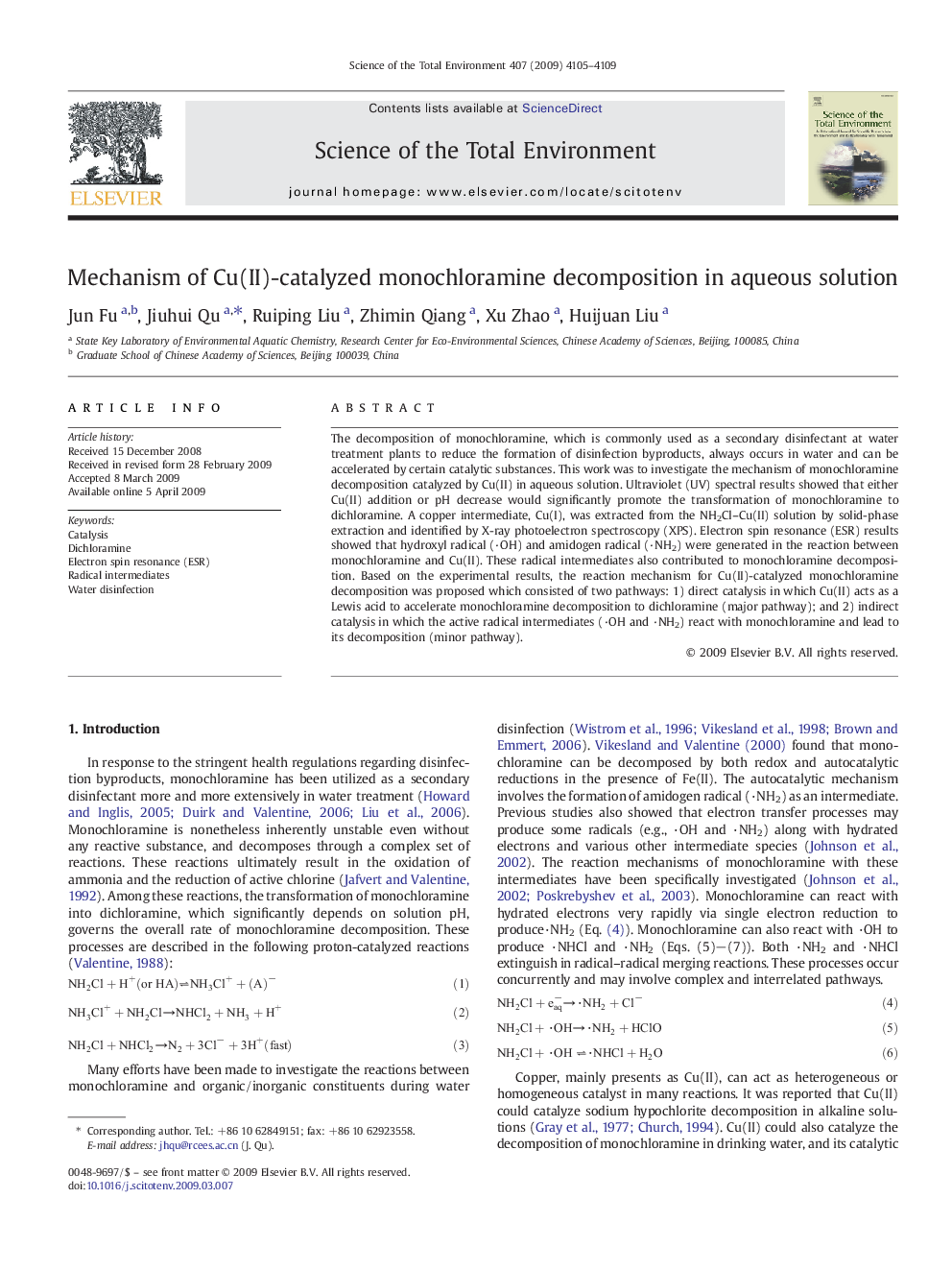| Article ID | Journal | Published Year | Pages | File Type |
|---|---|---|---|---|
| 4431431 | Science of The Total Environment | 2009 | 5 Pages |
The decomposition of monochloramine, which is commonly used as a secondary disinfectant at water treatment plants to reduce the formation of disinfection byproducts, always occurs in water and can be accelerated by certain catalytic substances. This work was to investigate the mechanism of monochloramine decomposition catalyzed by Cu(II) in aqueous solution. Ultraviolet (UV) spectral results showed that either Cu(II) addition or pH decrease would significantly promote the transformation of monochloramine to dichloramine. A copper intermediate, Cu(I), was extracted from the NH2Cl–Cu(II) solution by solid-phase extraction and identified by X-ray photoelectron spectroscopy (XPS). Electron spin resonance (ESR) results showed that hydroxyl radical (·OH) and amidogen radical (·NH2) were generated in the reaction between monochloramine and Cu(II). These radical intermediates also contributed to monochloramine decomposition. Based on the experimental results, the reaction mechanism for Cu(II)-catalyzed monochloramine decomposition was proposed which consisted of two pathways: 1) direct catalysis in which Cu(II) acts as a Lewis acid to accelerate monochloramine decomposition to dichloramine (major pathway); and 2) indirect catalysis in which the active radical intermediates (·OH and ·NH2) react with monochloramine and lead to its decomposition (minor pathway).
